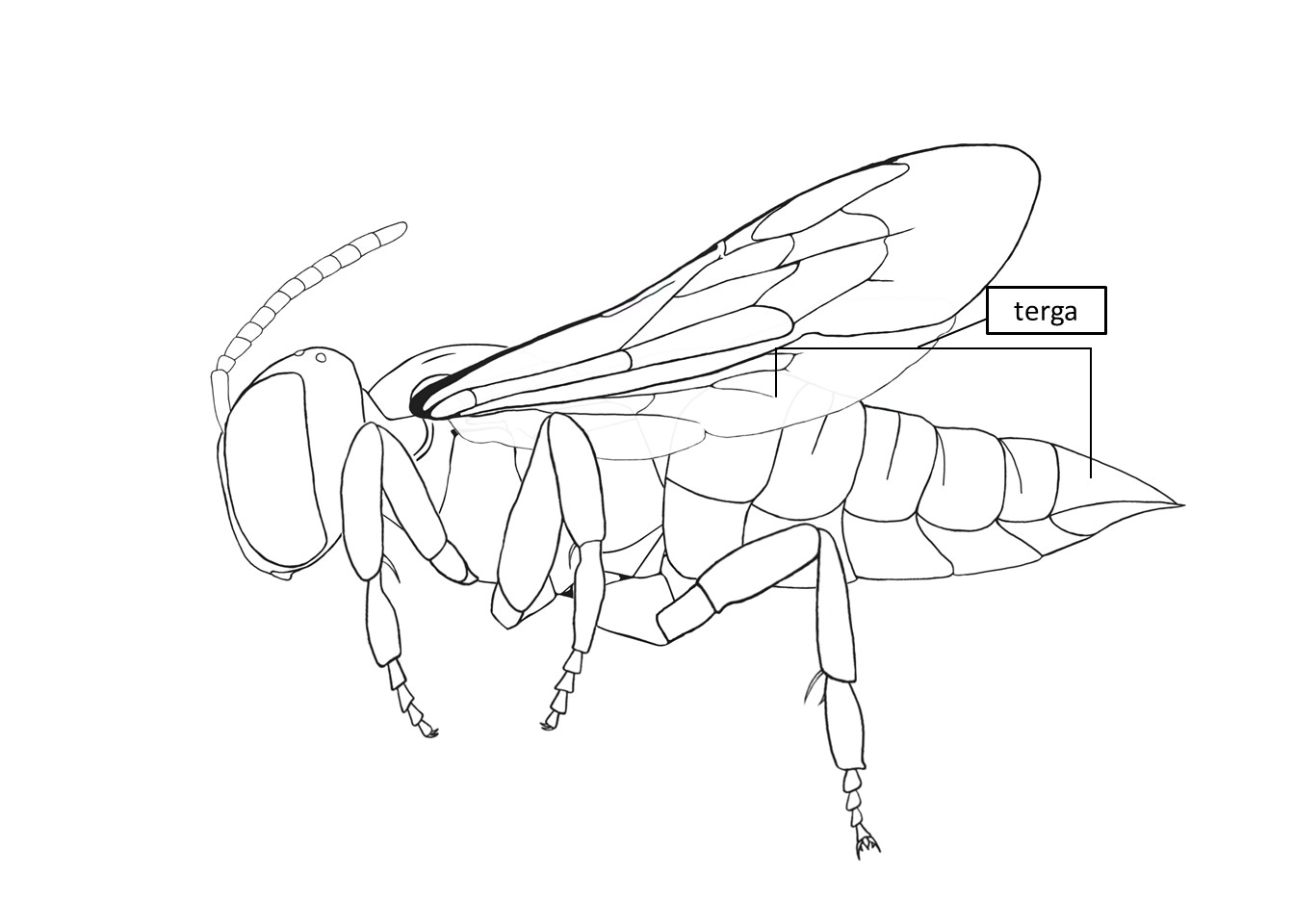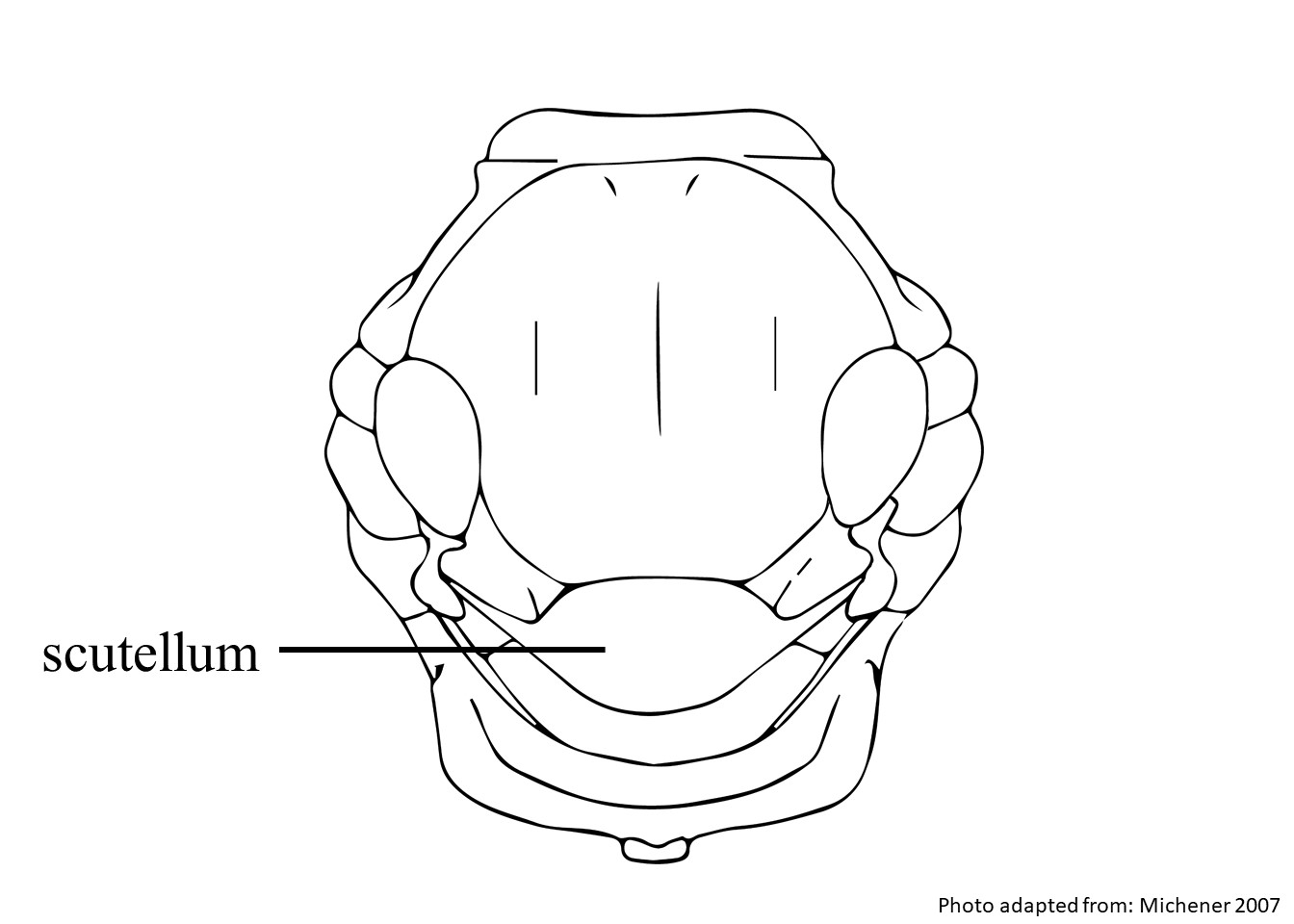Taxonomy
Family: Megachilidae
Subfamily: Megachilinae
Tribe: Anthidiini
Genus: Pseudoanthidium, Friese 1898
Subgenus: Pseudoanthidium, Friese 1898
Species: Pseudoanthidium rozeni Griswold and Burrows, 2021
Background
Pseudoanthidium rozeni are relatively small, 7–9 mm bees. They have predominantly black
integumentintegument:
a tough, protective outer layer
with symmetrical yellow spots on their face,
tergaterga:
the segments on the top side of the abdomen, often abbreviated when referring to a specific segment to T1, T2, T3, T4, T5, T6, or T7

, and
scutellumscutellum:
shield shaped plate behind scutum

. Their legs are predominantly yellow to orange, sometimes with a small amount of black at the base. The size of the yellow portions varies within the species. They have a thin coat of white
pubescencepubescence:
short, fine hair
that covers most of their bodies. Their wings are translucent and sometimes slightly brown.
Distribution
Pseudoanthidium rozeni are known from Afghanistan, Pakistan, and Tajikistan (
Litman et al. 2021Litman et al. 2021:
Litman, J. R., Fateryga, A. V., Griswold, T. L., Aubert, M., Proshchalykin, M. Y., Le Divelec, R., Burrows, S. & Praz, C. J. 2022. Paraphyly and low levels of genetic divergence in morphologically distinct taxa: revision of the Pseudoanthidium scapulare complex of carder bees (Apoidea: Megachilidae: Anthidiini). Zoological Journal of the Linnean Society, 195(4): 1287-1337.).
Host associations
Floral associations are unknown.
Nesting behavior
Little is known about the nesting biology of
Pseudoanthidium rozeni but most species of
Pseudoanthidium nest in pre-existing cavities like in wood, stems, galls or crevices (
Litman et al. 2021Litman et al. 2021:
Litman, J. R., Fateryga, A. V., Griswold, T. L., Aubert, M., Proshchalykin, M. Y., Le Divelec, R., Burrows, S. & Praz, C. J. 2022. Paraphyly and low levels of genetic divergence in morphologically distinct taxa: revision of the Pseudoanthidium scapulare complex of carder bees (Apoidea: Megachilidae: Anthidiini). Zoological Journal of the Linnean Society, 195(4): 1287-1337.).
Known invasives
There are no known invasives.
 , and scutellumscutellum:
, and scutellumscutellum: